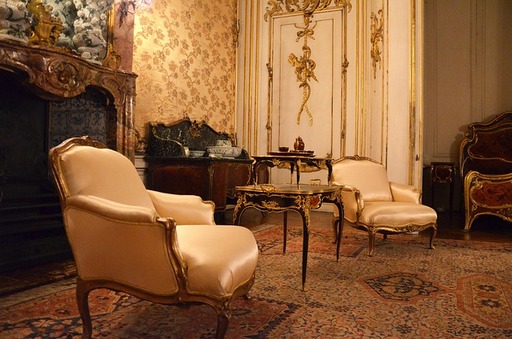
Antique furniture is a testament to craftsmanship and history, a window into the past that adds charm and character to any home. However, caring for these timeless pieces requires a delicate touch and a nuanced understanding of their unique needs. In this guide, we will explore the 10 dos and don’ts of cleaning antique furniture, providing you with valuable insights to ensure your treasured pieces stand the test of time.
Antique furniture is generally considered to be over 100 years old. It encompasses a wide range of styles and materials, from ornate Victorian pieces to simple Shaker designs. Understanding the materials used is vital for proper care. Common materials include wood (oak, mahogany, walnut), metals (brass, iron), and upholstery materials like silk or horsehair.
Here is our post on A Comprehensive Guide on How to Clean and Preserve Antique China and Porcelain
Dos of Cleaning Antique Furniture
Now, let’s explore the essential dos to preserve the beauty and integrity of your antique furniture:
1. Regular Dusting
Dust can accumulate over time, dulling the finish and promoting deterioration. Use a soft, lint-free cloth or a soft brush to gently remove dust from intricate carvings and crevices.
2.Use Mild Cleaners
When cleaning, opt for mild, non-abrasive cleaners specifically formulated for wood. Mix a small amount with water and apply using a soft cloth, following the wood grain.
3. Test Before Applying
Before applying any cleaner or polish, conduct a patch test in an inconspicuous area to ensure it won’t damage the finish. This precaution is especially crucial for antiques with delicate or unknown finishes.
4. Moisturize Wood
Antique wood can dry out over time, leading to cracks. Use a high-quality wood moisturizer to restore and maintain the wood’s natural moisture. Apply sparingly to avoid a greasy buildup.
5. Protect from Sunlight
Direct sunlight can fade and damage antique furniture. Position your pieces away from windows or use UV-protective window coverings to shield them from harmful rays.
6. Maintain a Stable Environment
Fluctuations in temperature and humidity can cause wood to expand and contract, leading to cracks and warping. Keep your antique furniture in a stable environment, ideally between 60-75°F with humidity around 40-45%.
7. Use Padding for Storage
When storing antique furniture, use padded covers to protect against scratches and dings. Elevate pieces off the ground to avoid moisture absorption.
8. Seek Professional Restoration
If your antique furniture requires extensive restoration, consult a professional. Attempting DIY repairs can result in irreversible damage.
9. Handle with Care
When moving or handling antique furniture, lift rather than drag to prevent stress on joints and legs. Remove drawers and detachable parts before transportation.
10. Seek Expert Appraisal
Before implementing any cleaning or restoration methods, consult with an antique furniture expert or appraiser to ensure the process aligns with the specific needs of your pieces.
See also our post on A Comprehensive Guide on How to Clean and Preserve Antique Photographs which you will not want to miss.
Don’ts of Cleaning Antique Furniture
Avoid these common pitfalls to safeguard your antique furniture from unnecessary harm:
1. Don’t Use Harsh Chemicals
Abrasive or harsh cleaning agents can strip away the finish and damage the wood. Avoid products containing ammonia, bleach, or silicone.
2. Don’t Over-Polish
Excessive polishing can create a waxy buildup that dulls the finish. Limit polishing to when necessary and use a minimal amount of polish.
3. Don’t Neglect Hardware
Overlooking hardware during cleaning can lead to corrosion. Gently clean and polish hardware separately to maintain its integrity.
4. Don’t Ignore Structural Issues
If you notice loose joints or structural issues, address them promptly. Ignoring these problems can lead to further damage over time.
5. Don’t Expose to Extreme Conditions
Avoid placing antique furniture in extreme conditions, such as damp basements or overly dry attics. Extremes can lead to mold, warping, and other irreversible damage.
6. Don’t Use Excessive Water
Wood is sensitive to moisture, so avoid using excessive water when cleaning. Dampen your cloth rather than soaking it, and dry the furniture thoroughly afterward.
7. Don’t Stack Items on Surfaces
Avoid placing heavy or sharp objects directly on the surface of antique furniture. Use coasters and protective pads to prevent scratches and dents.
8. Don’t Remove Patina
Patina, the natural aging of wood, is a prized characteristic of antique furniture. Avoid removing it during cleaning, as it adds to the piece’s unique charm and history.
9. Don’t Attempt DIY Repairs
DIY repairs can often do more harm than good. If your antique furniture requires professional attention, consult a skilled restorer.
10. Don’t Rush the Process
Cleaning and maintaining antique furniture require patience. Rushed cleaning can result in unintentional damage. Take your time, and approach the process with care.
See also our post on A Comprehensive Guide on How to Clean and Restore Antique Jewelry
Conclusion
Preserving the beauty of antique furniture involves a delicate balance of cleaning, maintenance, and knowledgeable care. By following these dos and don’ts, you’ll ensure that your treasured pieces continue to tell the stories of the past while gracing your home with timeless elegance. Remember, the key is a gentle touch, regular attention, and, when in doubt, seeking professional advice to guarantee the longevity of these historical gems.







